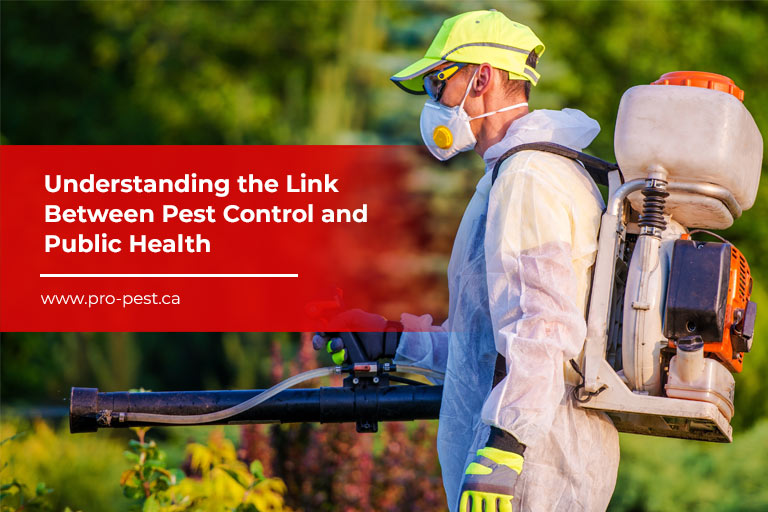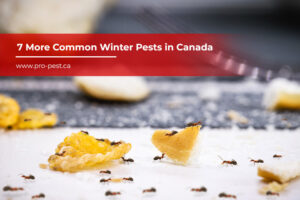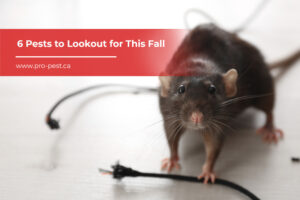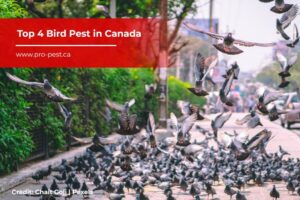Ah, pests. They’re the uninvited guests that no one wants but everyone seems to attract. They’re the party crashers that never leave, the freeloaders that raid our kitchens, and the mischief-makers that wreak havoc in our homes and businesses.
Because of the many downsides of pest presence in any establishment, the public needs to know that certain pests may present significant hazards to public health. Pests can carry many diseases, from the West Nile virus to Lyme disease to Hantavirus. If left unchecked, they can spread those diseases to unsuspecting humans.
Seeing as pest control and public health are so closely related, we’re here to help you keep those pesky pests at bay so we can keep our communities safe and secure.
The Health Risks of Pests

Our living environment can have a significant impact on our health and well-being. One factor that can impact our health is the presence of pests that can compromise the cleanliness and safety of our surroundings. By identifying and managing potential health risks in our living space, we can take proactive measures to create a safe and healthy environment for ourselves and those around us.
Here are some common examples of pests and the hazards they pose:
- Mosquitoes
Mosquitoes are well-known carriers of diseases like the West Nile virus, dengue fever, and malaria. They can also transmit heartworms to dogs and cats.
- Ticks
Ticks are known carriers of diseases such as Rocky Mountain Spotted Fever. They are particularly prevalent in wooded and grassy areas.
- Rodents
Rodents like mice and rats can carry Hantavirus, which can cause severe respiratory illness in humans. They can also transmit other diseases through their droppings and urine.
- Cockroaches
Cockroaches can trigger asthma and allergies in some people. They can also spread bacteria and contaminate food.
- Bed bugs
Bed bugs can cause itchy bites, and infestations can lead to anxiety and sleep disturbances. Additionally, these pests can spread harmful bacteria and viruses to humans.
- Bees and wasps
Bee and wasp stings can cause severe allergic reactions, and their presence can also disrupt outdoor activities and events.
- Bats
Bats can carry rabies, which is a deadly virus that can be transmitted to humans through bites or scratches. They can also carry other diseases, such as histoplasmosis, which can be contracted by inhaling their droppings.
- Birds
Birds can carry a variety of diseases, such as salmonella and other viruses. They can also create unsanitary conditions with their droppings, attracting other pests like flies and cockroaches.
Proper pest control measures can help prevent these pests from becoming a problem and protect our health and well-being.
The Role of Pest Control in Public Health

Effective pest control measures like rat control in Toronto are critical in protecting public health. Here are some ways in which pest control can contribute to a healthier and safer community:
- Reducing the spread of diseases
Pests like mosquitoes, ticks, and rodents can carry and transmit various diseases. Effective pest control measures can help reduce their population and prevent the spreading of diseases.
- Identifying and addressing pest problems
Conducting routine pest inspections can assist in detecting potential issues early on and preventing them from escalating into severe infestations. By catching pest infestations early, pest control professionals can take steps to eradicate them before they cause significant damage or health risks.
- Integrating with public health initiatives:
Pest control can be integrated into public health initiatives like mosquito control programs. By collaborating with public health agencies, pest control professionals can help identify and address pest problems in a coordinated and effective way.
- Providing education and outreach
Pest control professionals can also educate the public about pest prevention and control. Information on simple preventive measures, such as sealing cracks and crevices and removing standing water, can help individuals and communities prevent pest infestations and reduce health risks.
By prioritizing effective pest control measures, we can help protect public health and create safer, healthier communities for all.
Methods of Pest Control
Effective pest control is essential for preventing infestations and reducing the risks associated with pests. Various methods are used to control pests, each with benefits and drawbacks. Understanding the available pest control methods, such as those mentioned below, can help you determine the most effective approach for your situation.
- Chemical control
This method involves using pesticides to kill or repel pests. Chemical control can be highly effective but may pose health risks to humans and pets if not properly used.
- Biological control
This method uses natural predators or parasites to control pest populations. Biological control can be an environmentally friendly approach but may not be as effective as chemical control.
- Mechanical control
This method involves physically removing pests or using barriers to prevent their entry. Mechanical control can be cost-effective but may not be feasible for larger infestations.
- Cultural control
This method involves modifying the environment to discourage pest activity, such as removing food sources or reducing moisture levels. Cultural control can be an effective long-term approach but may require significant environmental changes.
Regardless of the method used, it’s important to prioritize safe and effective pest control products and practices to minimize health risks and protect the environment.
Prioritizing Safe and Effective Pest Control: Trust the Experts at Pro Pest Corporation!
Pest control is a vital aspect of public health, as it plays a crucial role in preventing the spread of diseases. Effective pest control methods can help reduce the risk of pest-borne diseases and create a safer and healthier environment for people to live and work in. It’s essential to take preventative measures, such as sealing cracks and gaps, eliminating standing water, and storing food properly, to prevent pest infestations.
In addition to preventing the spread of diseases, pest control can also help prevent property damage. Many pests can cause significant damage to homes and businesses, resulting in costly repairs. By addressing pest problems promptly and effectively, we can protect our property and avoid these expenses.
It’s crucial to trust the experts. Professional pest control companies have the experience, knowledge, and equipment needed to identify and address pest problems effectively. They can also provide safe and eco-friendly pest control solutions tailored to your unique needs.
If you’re facing a pest problem in your home or business, don’t hesitate to call Pro-Pest at 416-487-4179 for pest control in Toronto.



















